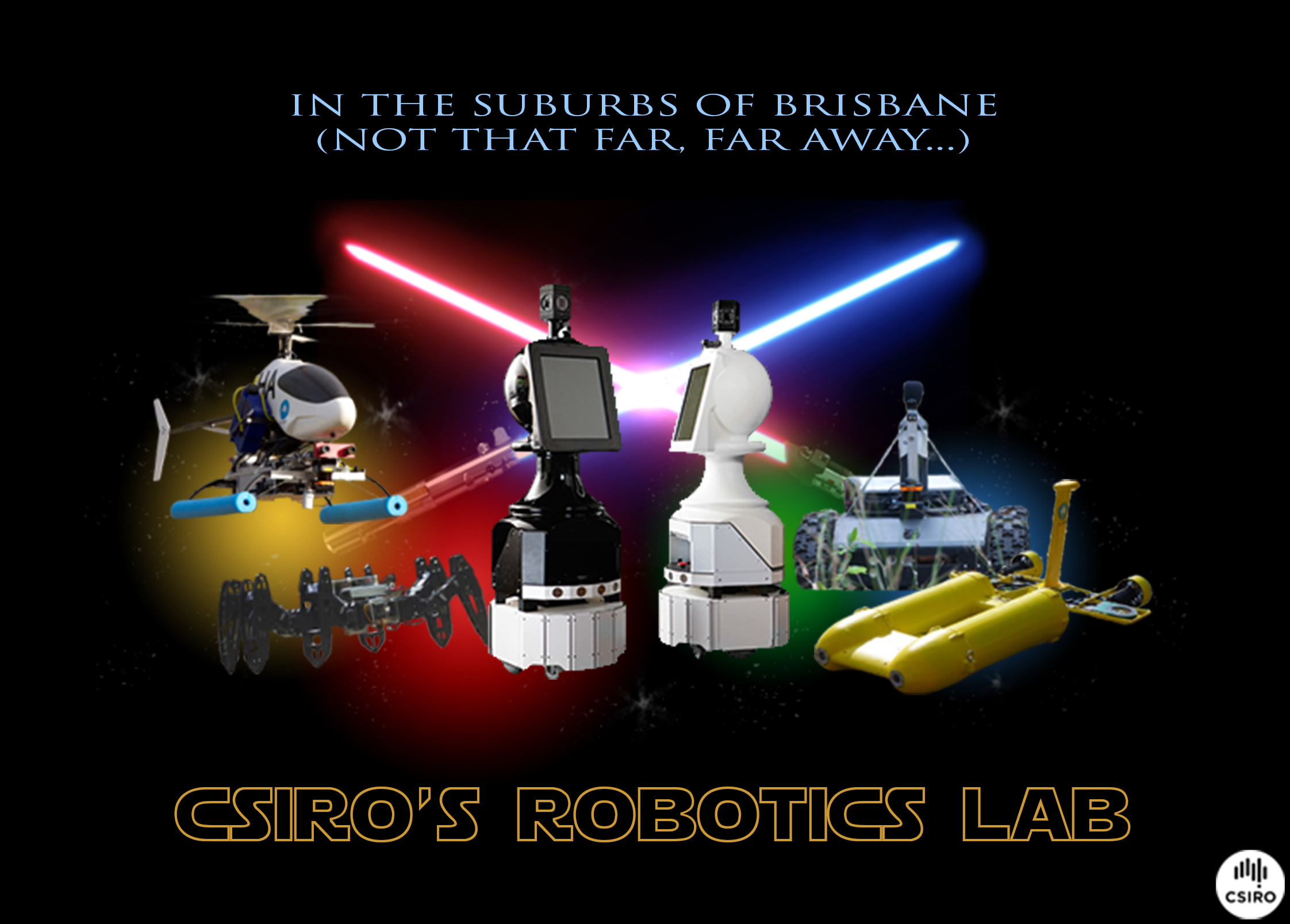Today marks a very special occassion for all geeks around the globe -International Star Wars Day (aka May-the-fourth-be-with-you Day). To get the download on all things Star Wars as well as what is in store for the future of robotics research, we spoke with our very own ‘Yoda of robotics’ Dr Jonathan Roberts.
When did you first become a Star Wars fan and what makes you love the series so much?
I became a fan the moment I saw Star Wars IV – A New Hope. It was 1977 or 1978 (released on Dec 27 1977 in the UK where I grew up) and I was 8-years-old. I loved the spaceships, the creatures, the adventure but most of all the droids (robots) so much that I wanted to be Luke Skywalker and wear his crazy white jacket and trousers – I hence took up Judo. I got badly beaten up but at least I had the outfit!
Dr Jonathan Roberts, Director of the Autonomous Systems Lab at aged 10 wearing his Star Wars paraphernalia on the weekend The Empire Strikes Back was released
How did the series influence your career in robotics?
After ESB (Empire Strikes Back) and ROTJ (Return of the Jedi) screened, I decided that I had to be an astronaut or a space scientist. I eventually did a degree in Aerospace Engineering as well as some parachuting to test if I had what it would take to make it in the industry. During my course, I found that I loved spacecraft design subject the most. I could not quite believe that I was at university learning how to design an actual spacecraft.
Soon it came time to decide on what area to do a PhD in. I figured that astronauts were going to use robots, just like in Star Wars, so I decided to do a PhD in the area of robot vision. I found that I actually loved actually doing robotics research and I realised that space travel was a bit too risky for me.
How does the robotics work you do now in our Autonomous Systems Lab differ from the robots in Star Wars?
The main difference is that the droids in Star Wars are capable of far more general tasks than what robots are designed to perform today and often lend a hand in all sorts of applications. For example, R2-D2 is a droid designed to help work spacecraft, yet he also occasionally subs as an excellent spy and cocktail waiter.
Robots on Earth today tend to be made for very specific tasks and are not particularly easy to train to perform activities outside their intended scope. However, we are currently developing robotic systems which are designed to assist people in a variety of circumstances. While some may work alongside people in a factory others are designed for tasks considered impractical or too hazardous for humans. This is exactly what droids do in the Star Wars universe, except of course droids help all types of weird creatures, not just people.
What does the future hold for robotics research?
For robotics to become mainstream they will need to be simple to teach, they must be affordable, and they must be dependable. The concept of a dependable robot is one that goes beyond high reliability, but also includes the idea that a robot must behave as you would expect it, it should be trustworthy, secure and safe.
The current hot area of robotics is in the air. Unmanned flying robots are becoming easier to develop and are based on affordable electric multi-rotor helicopters. For robots to become droid-like they will need fantastic perception systems to help understand what is around them and new types of planning systems that allow them to work out what to do and how to do it on-the-fly. We might not have a robot which can solve all our problems right now but maybe we will in the not too distant future.
Have a favourite robot? Tweet us @CSIRONews using #maythefourth and let us know which bot you love the best!
Media: Dan Chamberlain. P: +61 2 9372 4491. M: 0477 708 849. Email: daniel.chamberlain@csiro.au




8th May 2013 at 10:17 am
Reblogged this on Helix @ CSIRO and commented:
Check this out! Then, stay tuned for more exciting news on CSIRO’s robots this Friday in Science by Email.